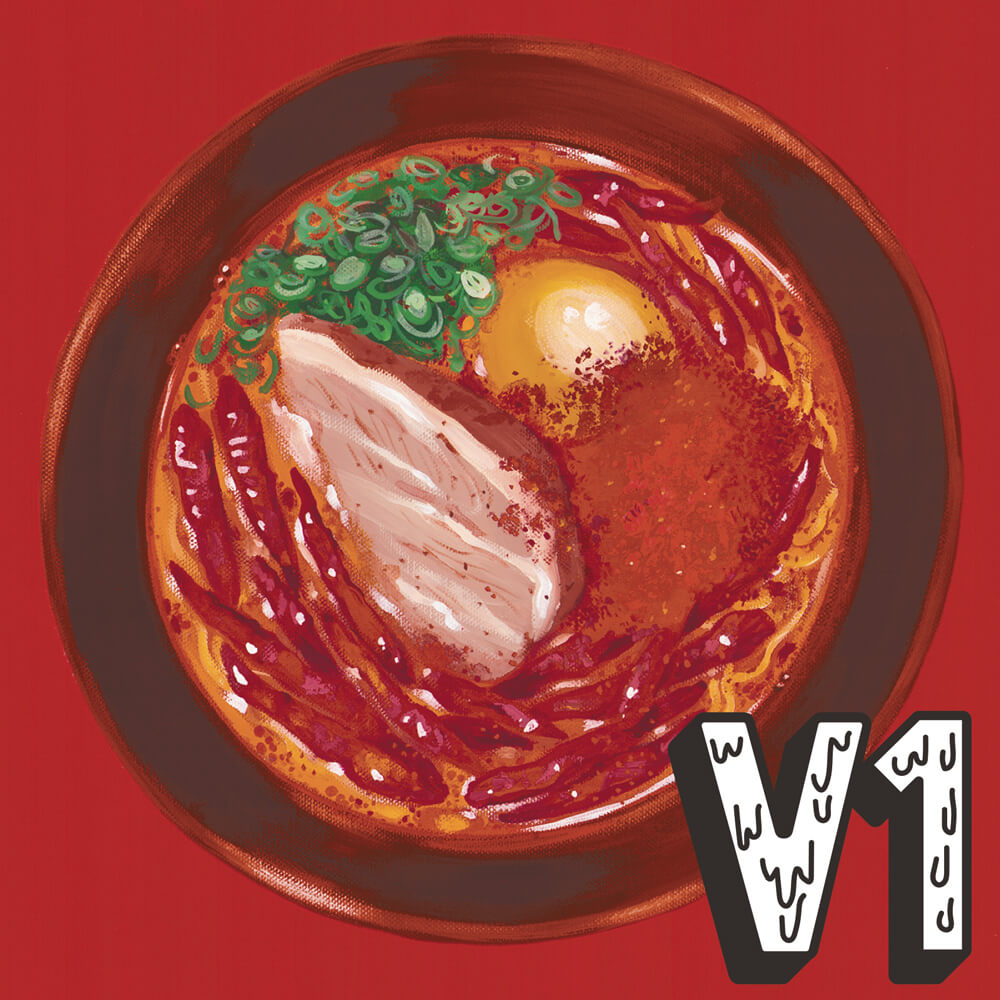Gallery
 Illustration: Keiko Shindo
Illustration: Keiko Shindo
Double Hot and Spicy Mid-summer Ramen Noodles?
Hotter and spicier ramen noodles are the latest fashion. Chile-covered red soup will remind you of a bloody pond of hell and make you sweat. When you eat extremely hot food in an air-conditioned room, you still feel hot and be drenched in sweat. You also feel pain in the mouth. Why does this happen when you eat hot spicy food?
"I will clear my bowl!" You start slurping noodles. "What? They aren't hot. It's easy to clear." You may smile to yourself. But, a bit later, you will be stunned. "Ugh! Awful! My mouth is on fire!" Have you ever had such an experience? Pungency and pain come later. All these things, sensation of pungency and pain, the time lag between action and onset of the symptoms, and perspiration, are attributable to capsaicin and the "TRP channels."
Water cannot relieve pain
Why?
The reason why chilis feel not only hot but pain is because they activate the "TRP channels," or cell sensors throughout the body which detect both heat and cold. Among them, "TRPV1" detects noxious heat over 43℃ and causes a painful sensation in connection with heat, thereby warning living bodies that heat is dangerous.
The "TRPV1" also detects capsaicin, a compound that is responsible for the strong, sharp smell or taste of chiles. This is the reason why you feel "hot and pain" when eating extremely hot noodles covered with chilis. The pain comes later because of the unique characteristics of capsaicin. This fat-soluble substance activates "TRPV1" after passing through oral cavity cells. There is a time lag. In addition, pungency and pain will not pass even if you drink water. Once entering the cells, capsaicin cannot be washed away.
Are hot spicy cold ramen noodles perfect for this hot summer?
You will feel less pain
When capsaicin activates the "TRPV1," it sends signals to the brain to let it know that it is the time to start sweating to release heat from inside the body. If you sweat heavily though the body temperature was not high, the body would get cold. In fact, heat generation will be turned on to protect the body from being chilled to the bone. Sweating lowers the body surface temperature moderately and makes us feel cool. People living in a hot climate like Southeast Asia are fond of eating hot meals. Incidentally, capsaicin is effective in reducing body weight by turning on heat generation. It has something to do with the "TRP channels."
When eating hot spicy ramen noodles, you cannot escape the pungency and pain caused by the synergy between "heat" and "capsaicin." The risk increases in an air-conditioned room. You will feel much hotter because of a big temperature difference between the chilled body and the hot noodles. If the noodles are too hot to eat, cool them. Cold noodles cause less pain.
Hot food lovers may boast, "Stay out of this! Summer is the season for a great leap!" But, look before you leap.
